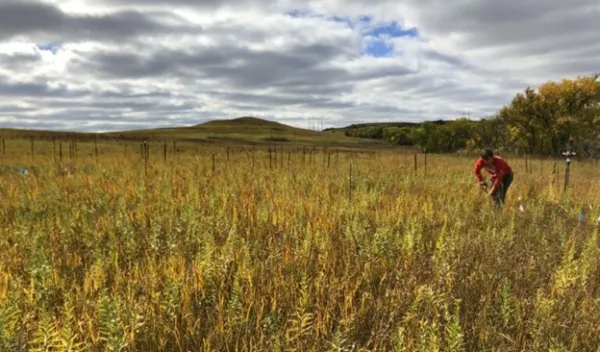
Historical irrigation leaves long-lasting legacies on the prairie
A hallmark of environmental science is understanding how ecosystems respond to global change. Much of this research focuses on short-term ecosystem responses, such as how an ecosystem responds to a sudden onset of drought. But previous conditions can modify that response. In the same way a formative childhood experience might change how an adult responds to stress, legacy effects can change the direction or magnitude of ecosystem responses to disturbance.
A study at the U.S. National Science Foundation-supported Konza Prairie Long-Term Ecological Research site modified a 25-year irrigation experiment to show that historical irrigation patterns determined the sensitivity of carbon cycling to drought. The results suggest that long-term legacies play a significant role in how an ecosystem responds to short-term stress. The findings were published in Global Change Biology.
"Soil is a living ecosystem that doesn't soon forget conditions from years ago," says Doug Levey, a program director in NSF's Division of Environmental Biology. "Today's droughts and fires may severely alter the trajectory of tomorrow's grasslands and forests."
Researchers at Konza Prairie LTER began irrigating a long strip of prairie in the 1990s. Initially, they wanted to study how avoiding drought might change the ecosystem, from plant community composition to soil nutrient availability.
After 25 years of consistent irrigation, the researchers had what they needed from the initial experiment. They shifted course and reversed treatments for several experimental plots. Historically irrigated sites were suddenly thrown into a simulated drought. The scientists also induced drought at several control sites, which had natural precipitation for the initial 25-year experiment.
The transition allowed researchers to look for legacy effects: persistent effects of long-term environmental conditions, in this case ample water, that affect how an ecosystem functions in the face of new environmental stress.
Over the following three years, the researchers measured variables they thought might reveal legacy effects. Many of these revolved around carbon. "Tallgrass prairie tends to fluctuate between being a source and a sink for carbon depending on climate," says Caitlin Broderick, lead author of the study. As a result, the scientists found, legacies left on the prairie may have much to tell us about climate change.
